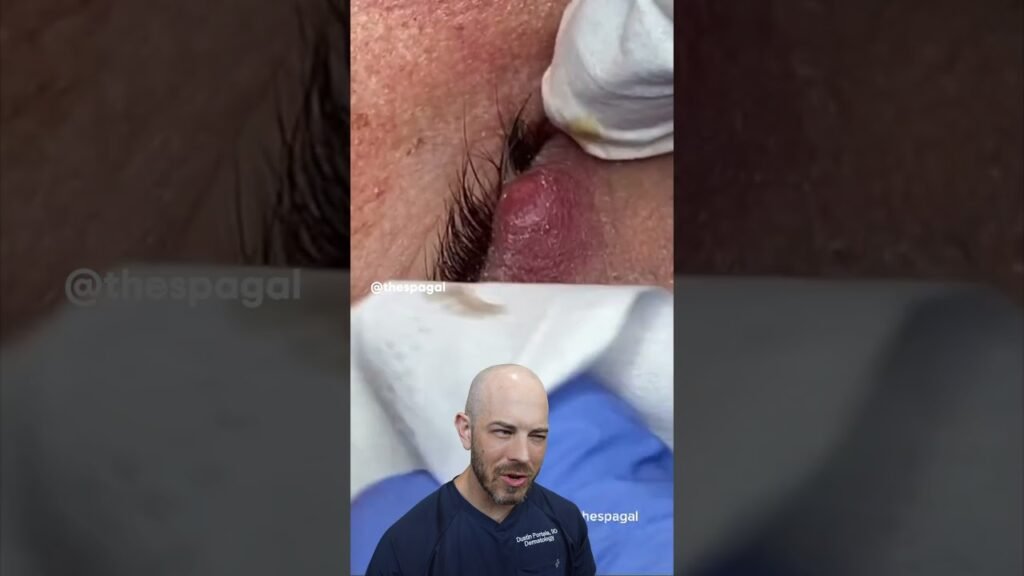Acne: Understanding the Common Skin Condition
Acne is one of the most widespread skin conditions, affecting people of all ages and skin types. It manifests in various forms, including pimples, blackheads, and whiteheads. While acne is often associated with teenagers, it can persist or even develop in adulthood.
The root cause of acne lies in clogged hair follicles. These follicles, or pores, can become blocked by a combination of oil (sebum), dead skin cells, and bacteria. When this happens, it triggers inflammation and the formation of blemishes.

Several factors contribute to the development of acne:
- Hormones: Hormonal fluctuations, especially during puberty, pregnancy, or menstrual cycles, can lead to increased oil production in the skin, making it more prone to acne.
- Genetics: A family history of acne may increase the likelihood of developing it, as skin type and oil production are often inherited.
- Diet: While diet alone may not cause acne, certain foods—such as those high in sugar, dairy, or refined carbs—may exacerbate breakouts in some individuals.
Acne can vary in severity, ranging from mild cases with occasional blackheads to severe forms like cystic acne, which can cause scarring.
Proper skincare and treatment are essential for managing acne. This includes cleansing the skin gently, avoiding harsh scrubs, and using non-comedogenic products. Over-the-counter treatments with ingredients like benzoyl peroxide, salicylic acid, or retinoids can be effective for mild cases. For severe acne, consulting a dermatologist for prescription medications or therapies may be necessary.
Understanding the causes and triggers of acne is the first step toward achieving clearer, healthier skin.




Your point of view caught my eye and was very interesting. Thanks. I have a question for you.
amoxicillin price – https://combamoxi.com/ amoxicillin pills
fluconazole ca – flucoan fluconazole online buy
cenforce 100mg drug – https://cenforcers.com/ cenforce 50mg drug
cheapest cialis – fast ciltad cheapest 10mg cialis
u.s. pharmacy prices for cialis – strong tadafl cialis after prostate surgery
buy zantac 300mg online – https://aranitidine.com/ buy zantac pill
herbal viagra sale – strongvpls where to buy viagra online
With thanks. Loads of conception! click
More posts like this would prosper the blogosphere more useful. https://buyfastonl.com/gabapentin.html
I am in point of fact enchant‚e ‘ to gleam at this blog posts which consists of tons of of use facts, thanks towards providing such data. https://ursxdol.com/augmentin-amoxiclav-pill/
More articles like this would pretence of the blogosphere richer. https://prohnrg.com/product/omeprazole-20-mg/
More articles like this would remedy the blogosphere richer. acheter kamagra pas cher
This website exceedingly has all of the tidings and facts I needed about this participant and didn’t identify who to ask. https://ondactone.com/product/domperidone/
The reconditeness in this ruined is exceptional.
https://doxycyclinege.com/pro/losartan/
Thanks towards putting this up. It’s well done. http://www.predictive-datascience.com/forum/member.php?action=profile&uid=44797
dapagliflozin canada – https://janozin.com/# dapagliflozin pill
buy cheap xenical – https://asacostat.com/# order xenical 60mg pill
More content pieces like this would insinuate the web better. http://web.symbol.rs/forum/member.php?action=profile&uid=1175008
I don’t think the title of your article matches the content lol. Just kidding, mainly because I had some doubts after reading the article.
You can protect yourself and your ancestors nearby being cautious when buying pharmaceutical online. Some pharmacy websites operate legally and sell convenience, reclusion, rate savings and safeguards to purchasing medicines. buy in TerbinaPharmacy https://terbinafines.com/product/lamictal.html lamictal
Thanks on putting this up. It’s well done. TerbinaPharmacy
With thanks. Loads of conception!
**mind vault**
mind vault is a premium cognitive support formula created for adults 45+. It’s thoughtfully designed to help maintain clear thinking
Your point of view caught my eye and was very interesting. Thanks. I have a question for you.
Finding the right 7gamesentrar can be a pain, but this one was no problem. Smooth and simple login process. If you’re already using 7games, this is a good way in. Give 7gamesentrar a try.